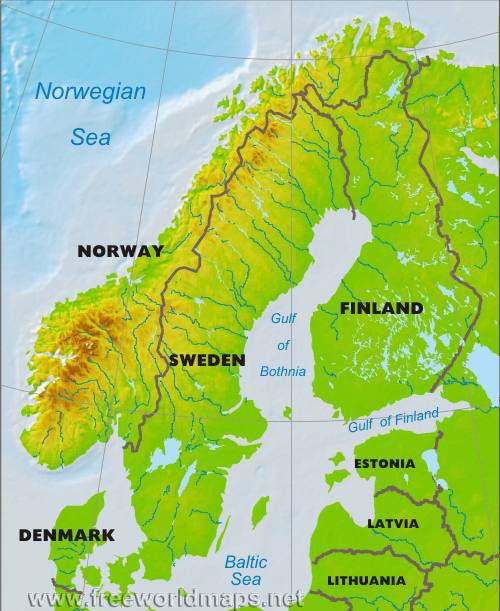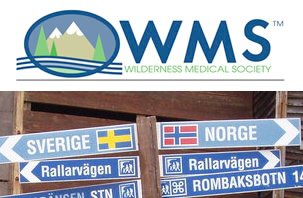Wilderness travel and recreation is not new to Scandinavia. Indeed much of the Scandinavian subcontinent is covered in mountain ranges, national parks, snow, polar nights, seas and lakes. Scandinavians participate in adventurous activities, much as our counterparts do in North America. In Sweden, snowmobiling, tour skiing, recreational skiing, sea kayaking, hiking and camping are avidly practiced. In Norway, one can find people cliff jumping, mountain climbing, paragliding, scuba diving and even arctic surfing. Despite the high prices of travel in the Nordic countries, tourists flock each year to Scandinavia, seeking more extreme experiences. People, unfamiliar with snow and cold, make the pilgrimage each year to the Ice Hotel in Northern Lapland. Foreigners are seeking rugged peaks in Northern Norway.
This passion for outdoor adventure increases the exposure to wilderness conditions and risk of injury or illness in austere environments. During the 2012/2013 season, Norway recorded eight avalanche fatalities, as well as snowmobile injuries abound in Northern Sweden. Wilderness medical concepts are familiar to medical practitioners. Wilderness medicine related care and research is performed at the major university hospitals.

Wilderness medicine related organizations abound. The Norwegian Mountain Medical Society has existed now for over 10 years. They are now offering the ScanDIMM. The Swedish Ski Area Association trains physicians each year to serve as resort medics. The University College of Östersund in Sweden has previously held a course in wilderness medicine. The Swedish police organize search and rescue, upon which many physicians serve as medical personnel. The Norwegian Red Cross as well as Norwegian People's Help organizations also have many physicians, nurses and ambulance workers volunteering. Both Norway and Sweden have rural medical organizations.
In 2008, Benjamin Lischner, Maria Holmgren and Emil Peclard, all working as house officers at Kiruna Hospital in Northern Lapland, attended the Wilderness Medical Society´s (WMS) annual winter conference in Park City, Utah. It became very clear that despite the various organizations that already existed in Scandinavia, there was lacking an umbrella organization focused on pure, all-round wilderness medicine. We believed that the organizations and structures which already existed were too niche and specialist oriented. During this conference we three were certified in Advanced Wilderness Life Support (AWLS). We believed that AWLS was a perfect basic education for all medical practitioners to be able to achieve. We published an opinion article in the Swedish Journal of Medicine to this fact.
Alas, we all went our separate ways, but in 2011 a larger group of Scandinavians met up at the WMS Park City winter meeting, intent on networking and realizing our goal of forming a Scandinavian Society of Wilderness Medicine. Out of the group, Benjamin Lischner, Henrik Hedelin, Emil Peclard, Elin Nissilä, Eric Svensk, Monica Iversen, Katrine Finsnes, Dagfinn Eilertsen, Sverre Håkon Evju and Anne Svelstad Evju achieved the goal of organizing the first AWLS course in Europe, held in Abisko, Sweden in September 2011. We felt we finally had a firm ground upon which to form an organization.

We have continued to meet and give courses. We have even adopted Dr. Suzy Stokes from the UK into our group. Five of us have achieved the FAWM title. Two have certified in the DiMM program. While some have done research on Kilimanjaro, worked in the Australia outback or war torn areas, others have practiced wilderness medicine closer to home. Despite our geographical wanderings, we have kept in touch and continue to meet.
However, we have not yet organized a formal wilderness medical society. While we have a fairly active Facebook page, none of us have been able to dedicate the required time. One major question we face is: in which context we should form? We have all agreed that we are not interested in forming a free-standing organization but are interested in affiliating with larger more established groups. One idea which has been proposed is forming a subgroup in the WMS. Other ideas are to form a subgroup in either the Swedish or Norwegian rural medical societies or forming a sub-chapter of the Norwegian Medical Association. Even without a "wilderness home" we are still active members of the WMS and continue to contribute to the wilderness medicine knowledge and network base.
So at your next WMS meeting, don´t be surprised to find some of us attending and speaking that strange "Swedish Chef" language with each other. We almost always make it to the major meetings and we aim to seek a larger profile in the future. Vi ses!